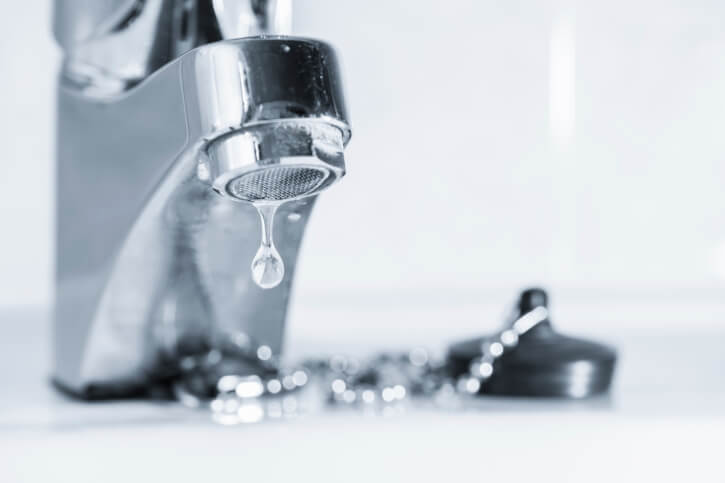
The 5 Most Common Plumbing Leaks
5. Washing Machines
It can be easy to forget how much water goes through your washing machine, and it can be a rude surprise when all of that water ends up on your floor. Fortunately, there are steps you can do to prevent it.
- Replace rubber or plastic hoses with stronger, steel braided hoses. Replace these hoses for the machine every 5 years, no matter how they look. Most deterioration happens inside.
- Turn off water to the washing machine if you’ll be gone for a few days.
4. Toilets
Toilet failures can be sudden, such as a faulty supply line busting, or they can be slow, seeping leaks. And that’s not to mention any problems that could be caused by clogs. These leaks are harder to prevent, but there are a couple things you can do to make it easier to deal with them.
- Make sure your shutoff valve is accessible and easy to turn. That way you easily turn off the water if you do see a leak or have a clog.
- When you do have a clog, get the lid off the reservoir and pull up the float or close the flapper. This will keep more water from flowing into the bowl and causing an overflow.
3. Water Heaters
The most common reason for water heater leaks is simply age. The average water heater has a lifespan of 10 years, yet a lot of water heaters are a lot older than that. Old water heaters rust and corrode, which will quickly lead to leaks. Fortunately, there a few steps you can take to help prevent leaks.
- Have a pro inspect the water heater every 2 years while it’s under warranty, then every year after that.
- Flush out the sediment from the hot water tank. If you’re uncomfortable with this, you can have a pro do it for you.
2. Dishwashers
There’s a lot of water that goes through your dishwasher. If a seal in the wrong spot breaks, all of that water could end up on your kitchen floor. There’s a couple places where you can check to spot any leaks before they get too bad.
- Check under the sink. Dishwashers are usually connected to your main drain, and leaks along the hose can lead to discoloring or wet spots.
- Look around the base of the dishwasher. Water damage can cause discolored floors, warping tiles, or water spots on cabinets.
1. Faucets
Whether it’s in a sink, the bathtub, or to the shower head, every faucet has moving parts that see a lot of use. This heavy use will wear down the parts over time and damage the seal on them. The constant changing pressure can also put strain on the hoses that connect the faucets.
- Periodically inspect under the sink. Faucet leaks can go around the handles and down the hoses.
- Pay attention to any leaks in your bathtub or shower. Even if it’s falling in your shower or tub now, it can quickly spread to behind the walls.
- Look for any discoloration on your sink, fixtures, or tile that would point to a leak.